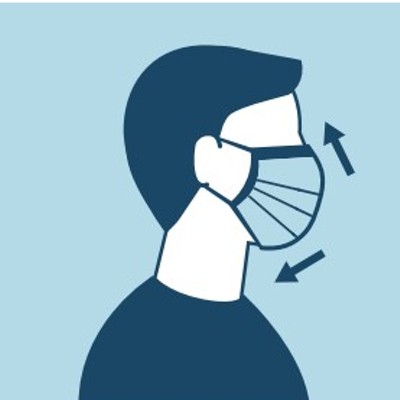At the same time, the U.S. House-Senate Conference Committee is poised to take action on legislation sponsored by Senators Pete Domenici of New Mexico and Paul Wellstone of Minnesota. Congress will this week decide whether national insurers will be required to include mental health coverage at parity--that is, the same levels of coverage--with other medical conditions.
According to professionals and consumer activists in the field, both of these actions are a long time coming.
The number of Arizonans who both suffer from a mental illness--like schizophrenia, the manias of bi-polar disease or the chaotic complex of pain reflecting borderline personality disorder--and are hooked on alcohol, crack, meth or any of the favored opiates, or some combination of them, is rising. Observers say that rise is too fast to be accounted for by Arizona's booming population increase alone.
But if you know or love someone who suffers from mental illness and a substance-use disorder, don't hold your breath. To get help for these conditions in Arizona, you still have to run a maze that often dead-ends in stigma, indignity, humiliation and real pain.
State-mandated change to the private insurance system is likely to come only years down the line, and only after millions more are spent while insurers shift costs of care to an already overburdened and under-financed public health care system. And only after the lives of family, friends and the community at large are further twisted by the lack of help for those who desperately want it.
"IT'S ALL ABOUT money in many ways," says Dr. Edward Gentile, medical director for Community Partnerships of Southern Arizona (CPSA), the authority that coordinates public behavioral health delivery for the state's five southeastern counties. "If someone has private insurance, they may or may not be covered for behavioral health treatment," Gentile adds.
What compounds the problem for those seeking help for a dual diagnosis is a medical delivery system separated into two, sometimes competing, "silos" of care. If you show up for treatment for substance use you may have one set of providers. Mental illness is treated by an entirely different group, without coordination or communication, except at the most superficial level, between the two.
"These are conditions that have to be treated simultaneously," says Joan McNamara, executive director of Compass Healthcare, one of the care providers in Southern Arizona.
"There's a history behind the split in care," says Mario Cruz, a former medical director for several Southern Arizona behavioral health delivery organizations and now a psychiatric clinician and researcher at the University of Arizona. "People trained in substance-use disorders historically come out of a school of hard knocks, an experiential kind of training. Mental illness professionals are degreed," Cruz explains.
"Today, there's a higher level of training on both sides, and it's largely the separation of funding that matters," says Cruz. "But a lot of professionals are afraid that if there are not separate structures, then there will be the loss of jobs for both sides, and funding for care providers has come under real stress with the requirements of managed care and the rise in insurance costs," he adds.
Dual silos of care has led to treatment in the private sector based on where the money is rather than what the illness and whole person require. The gatekeeper in the local billing department of one of the larger private care providers told the Weekly, "Most plans pay at a higher rate for substance abuse and alcoholism treatment than they do for psychiatric. So what usually happens when you have a choice between diagnoses is that substance abuse gets chosen over psychiatric." That practice influences quick and cursory treatment of the mental-illness side of the equation.
Some docs stabilize their patients with drugs that are "reversible" chemical lobotomies. "I felt like a guinea pig for years," one young woman diagnosed with bi-polar disease while she still had private insurance told us. "I came out of Cottonwood (a private treatment facility) five years ago stronger and a lot smarter about my disease," she recalls.
But once she lost her private insurance, "I had to go through the degrading experience of applying for welfare, and the frustration of sleeping through two years, totally non-functional" with the prescriptions given her. "It would have been real easy to give that stuff up and gone back to illegal [addicting] drugs," she says, "and I almost did."
It's the use of certain drugs in treatment that most troubles McNamara of Compass Healthcare. "Medications are often prescribed for severe mental illness that are contraindicated for substance abuse or dependence. Sometimes there is nothing else that will do the job, but carries risk.
"But often there are other choices to be made," says McNamara. "Cost is often a factor there. Some public patients, and even some private ones, have had the experience of getting drugs that did noting more than keep them chemically lobotomized," she adds.
ONLY IN THE LAST four years has there been a shift in diagnosis, treatment and care of dual diagnosis, particularly of patients with a primary mental illness and subsequent chemical abuse behavior. But there has been an educational and informational lag among some professionals. "1997 was the turning point for treatment," says UA clinician Cruz. "But that was only a start."
One aspect of the problem has been the increase in the number of those diagnosed with borderline personality disorder, a group with a particularly high incidence of co-occurring substance abuse disorders. "Community samples show that BPD's prevalence is approximately 1.8 percent in the general population. This is greater than the prevalence of schizophrenia," says Cruz. Stigma, even among many professionals, for this group of dual diagnosis sufferers is higher than for most other illnesses.
"Medical and mental health staff devalue these patients' cries for help and/or respite from their chaotic lives. Most wish they would die and disappear. You hear the term 'malingering' used quite often with these patients," says a passionate Cruz. "For most of these patients, it is my feeling that we as a society have never given them a chance to experience what life has to offer that is valuable and worth living for." And since 1997, hope for BPD has changed along with treatments for dual diagnosis generally.
"Data was starting to come out then as to the efficacy of certain treatment interventions for borderline personality disorder. So, professionals began to feel hope they could treat this population," says Cruz.
Both the private and public behavioral health systems responded to the added pressures from new treatments for difficult-to-treat diagnoses by digging into a bunker mentality. In the public side of treatment, that has changed only recently.
"The public system, through efforts at the state level, is trying to develop a seamless system of care for dual diagnosis patients. I have not seen such an initiative nor effort in the private sector," says UA clinician Cruz.
"In all my years involved with mental health in Arizona, I've known few who have received care through the private system," says Ellie Schorr, a former Arizona legislator, champion for mental health and advisory board member of the Alliance for the Mentally Ill of Southern Arizona.
"In the public treatment area, we are trying to break the silos down," says CPSA's Gentile.
Those who have a mental illness and co-occurring chemical- or substance-use disorder probably have a better shot at having blended care in the public system, according to many professionals and advocates we've spoken to.
"When the private system doesn't adequately care for people with co-occurring disorders, they will eventually lose enough of their assets to qualify for public care," says McNamara of Compass Healthcare. "And that constitutes cost shifting into a public system which is already overburdened and underfunded," she concludes.
"We are sensitive to the problem of people who find the system difficult to navigate," says Arizona State Department of Insurance assistant director for life and health insurance Alix Shafer. "It's one of the areas we hope to address in our current rulemaking. ... If the state needs special programs to meet special needs, we want to hear about it."
With history as a guide to the future, it may be two years before private insurers provide mental health insurance parity in Arizona. The last time there was a Congressionally mandated national requirement regarding mental health coverage limits was in 1996. Arizona incorporated those requirements for insurers only in 1998. Much will depend on the information the Department of Insurance receives.
"It's very hard to understand what's really going on, what's happening to people," says Schorr of the AMISA board. "But if you know who to ask for help, you can. People are willing."












